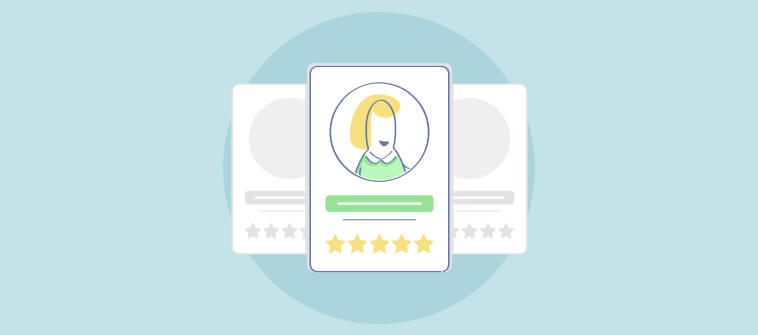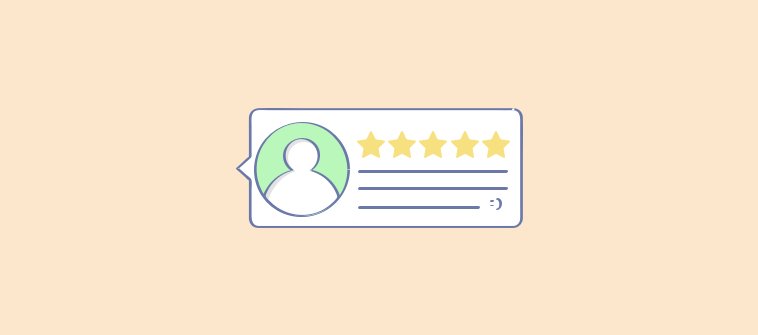
In his 1936 classic “How to Win Friends and Influence People,” Dale Carnegie advised, “Ask questions the other person will enjoy answering.”
Embracing this wisdom, businesses can unlock a world of genuine interest and honesty.
Customers love asking questions, especially before making a purchase. But can businesses ask questions to clients and customers?
Absolutely! Enter the magical realm of “Questionnaires” – the perfect bridge that fulfills curiosity and understanding for businesses and their valued customers!
What Are Questionnaires?
Questionnaires are web-based surveys that contain a series of questions asked with the intent of gathering information from respondents.
In some cases, these are used to deliver information to employees and potential customers.
In business marketing, online questionnaires are vital in bringing about significant improvements in the entire process.
It can be used to get information about an organization’s target audience, such as the opinions of their valued customers – an essential requirement for improving the quality of products and services, to collect customer feedback about a particular product/service, etc.
Questionnaires Vs. Surveys
Questionnaires and surveys – are they similar?
Well, almost. But not quite.
Although both belong to the same category, some significant differences set them apart. Here’s how:
A. Structure and Format:
- Questionnaire: A questionnaire is a structured set of questions with predefined response options. It is usually in written form and can be delivered online or on paper.
- Survey: A survey is a broader term that can encompass various data collection methods, including questionnaires. Surveys can also include interviews, focus groups, and observational studies.
B. Purpose and Scope:
- Questionnaire: The primary purpose of a questionnaire is to gather specific information from respondents, often for research or data collection purposes. It focuses on obtaining standardized data.
- Survey: A survey, on the other hand, can have a more comprehensive scope, aiming to collect data for various purposes, such as research, feedback, opinion gathering, or market analysis.
C. Flexibility:
- Questionnaire: Questionnaires are typically rigid and fixed in structure, as the questions and response options are predetermined before distribution.
- Survey: Surveys can be more flexible, allowing for different data collection methods and approaches, including open-ended questions and probing for more in-depth responses.
D. Sample Size and Population:
Questionnaire: Questionnaires are usually administered to larger sample sizes and broader populations to obtain a representative set of data.
Survey: Surveys can be applied to various sample sizes and specific populations, depending on the research objectives.
To be precise, a questionnaire is a specific type of survey that uses a structured set of questions with predefined responses, while a survey can encompass a broader range of data collection methods, including questionnaires.
| Aspect | Survey | Questionnaire |
| Structure and Format | A structured set of questions with predefined response options | Various data collection methods (including questionnaires, interviews, focus groups, observational studies, etc.) |
| Purpose and Scope | Gather specific information | Collect data for various purposes (research, feedback, opinion gathering, market analysis, etc.) |
| Flexibility | Rigid and fixed structure | More flexible, accommodating different data collection approaches |
| Sample Size & Population | Larger sample size and broader population | Can apply to various sample sizes and specific populations |
16 Advantages of Questionnaires
In this article, we will discuss the advantages and disadvantages of questionnaires so that you can weigh the pros and cons of this resource to avoid decision-making paralysis.
1. Help Understand the Customer
A good questionnaire is just like a real conversation. You can use both close-ended and open-ended questions to design a questionnaire. Marketers mostly prefer more open-ended questions to get detailed information.
Close-one-word answers with predefined responses like “yes” or “no” don’t get much input. However, they are necessary to gather quantitative data from respondents. Open-ended questions help in getting in-depth answers. The benefit is that you actually start learning about your customers.
Close-one-word answers with predefined responses like “yes” or “no” don’t get much input. However, they are necessary to gather quantitative data from respondents. Open-ended questions help in getting in-depth answers. The benefit is that you actually start learning about your customers.

2. Cost-Effective
If a business thinks of circulating questionnaires or conducting surveys to gather customer feedback traditionally, they would have to first take into account the material costs, printing, calls, interviews cost, and even the time it will consume.
Questionnaires designed using online tools are the most cost-efficient way to gain demographic information and learn about customers’ experience with the brand. These tools allow you to create professional-looking questionnaires using ready-made templates and questions, reducing the expenses incurred on research and human resources.
All you need to do is log in, select questions, customize the questionnaire, and share it with your target audience, all in just a few clicks.
3. Targeted Surveys
Not all the customers are your target audience. Online software helps you send questionnaires to a target audience. Based on your choice of customers, you can select and place questions in a particular format.
Using the ready-made templates, you can create customer satisfaction questionnaires, demographic questionnaires, employee feedback questionnaires, and more.

Although you can ask as many questions as you want, marketers tend to limit the questions to a maximum of 10. This ensures that respondents don’t get overwhelmed and abandon midway.
However, if there is still something left to be asked, you can create a subtopic and shoot another survey. After all, online surveys are cheap and can be shared easily.
4. Fast Results
Questionnaires are the simplest and fastest means of collecting data as they reach the audience instantly, and responses are registered by the surveyor pretty much simultaneously. ProProfs Survey Maker is especially suited to create questionnaires optimized for all devices such that your target audience can access them from anywhere and anytime.
Depending on customer reach and their willingness to participate, you’ll receive the results in the shortest possible time.
5. Scalable
If you have ever circulated physical surveys, you might be able to remember how many you are able to distribute in a day. 50, 100, or maybe 500. That’s it.
How many face-to-face interviews can you conduct in a day? Maximum 50, maybe 60.
But when you have the sky to touch, this number seems like nothing. Online questionnaires can be distributed to an endless number of people with a click, which is one of the major benefits of questionnaires.
With the internet at your disposal, your team can collaborate via shared inboxes, and your agents can instantly resolve customer queries via live chat.
You can also opt to send the survey to your customers via email, which enhances its customer reach, or simply embed the link on your website or blog posts as popups, sidebar, or in-app questionnaires.
This encourages users to give feedback before having to leave the website.
6. Market Research
Knowing exactly what your customer wants is vital to ensure business success. The online questionnaires meant for market research help you understand your customers’ expectations better.
These questionnaires give you insights and data about
- Customers’ awareness levels and their brand perception.
- Detailed perspective into customer’s buying habits
- Identify new target audience segments and demographics.

Business owners can interpret the collected data along with the necessary information about the target customers like age, gender, marital status, number of children (if any), which brand they have been using, and their preferred mode of purchase.
7. Simple to Administer
Face-to-face interviews, telephonic interviews, written or in print, are the common ways companies used to administer questionnaires. However, in this fast-paced life, nobody has the capability to spare extra time in these exhausting and demanding modes of questionnaires.
Companies now have to tweak their strategy and send online questionnaires or surveys to learn about their customers, employees, vendors, and more. The major benefit of an online survey or questionnaire is that you can export data in Excel sheets for further analysis.

The best part is that you can compare the latest data with the previous data to track changes and measure if the user experience has improved over the measured time.
8. Simple to Administer
Face-to-face interviews, telephonic interviews, written or in print, are the common ways companies used to administer questionnaires. However, in this fast-paced life, nobody has the capability to spare extra time in these exhausting and demanding modes of questionnaires.
Companies now have to tweak their strategy and send online questionnaires or surveys to learn about their customers, employees, vendors, and more. The major benefit of an online survey or questionnaire is that you can export data in Excel sheets for further analysis.
9. Uniform Format
Questionnaires were created as a great means of collecting information about an individual’s beliefs, behavior, and attitudes.
The best questionnaires are written and designed in a standardized format with clear instructions. They are administered in such a manner that all the users are asked precisely the same questions placed identically. All this is made possible with the use of an online questionnaire builder.
Standardization of questionnaires comes as a huge benefit for companies as they can record and analyze the responses uniformly. They are found to be more reliable in comparison with any other mode of the questionnaire as well.
10. Facilitates Follow-Up
Let’s say you are conducting a survey to figure out your CSAT score.
You sent out the questionnaire but didn’t receive as many responses as you hoped for. Now, it’s time for a gentle reminder or maybe even a couple of added incentives to motivate your recipients further.
When the entire process is online, it becomes all that much easier to take these measures than otherwise.
Additionally, if you think that some answers need further probing, you can use follow-up questions to understand the responses better as well as help you establish an action plan to address the key issues, if any.
11. Evergreen
People are extremely busy today (at least they think they are). It is not fair to ask them to complete a questionnaire at times when something urgent is bothering their mind.
Online questionnaires are shared across social media, sent via email, and can be embedded on the website. Respondents can choose their convenient time to give answers.
How many times have we thought of purchasing something exclusive online, only to forget, come back and discover it is gone? Such is the nature of human minds – it is forgetful and flitting, and unfortunately, this nature can affect your survey response rate.
This is where online questionnaires step in. They simply do not expire (if you don’t want them to), can be shared across social media, sent via emails, and embedded on the website.
As a result, respondents can choose any convenient time to give their answers.
Added benefit – no-pressure moments are also much more likely to elicit truthful answers! If required, however, you can set a certain date and time when the tool automatically stops collecting responses.
12. Reduced Social Desirability Bias
Oprah Winfrey once said, “Real integrity is doing the right thing, knowing that nobody’s going to know whether you did it or not.”
When answering questionnaires, most people dread answering truthfully, fearing what if somebody identifies them for sharing their negative opinions or views. The thought of unknown repercussions scares them off.
The online questionnaire creator ensures the anonymity of the respondents, keeping respondents’ identities private. Respecting privacy provides better data as respondents feel free and comfortable to share their heart.
Questionnaires have many benefits, but they have some drawbacks too. Knowing the pitfalls may be helpful in making the best use of this research tool. Let’s understand the flip side of questionnaires:
13. Efficient Data Analysis
Picture this: you’ve sent out a survey and collected a substantial number of responses, and now you have to make sense of it all. In the world of research and data gathering, where time is of the essence, this process can become cumbersome fast.
With questionnaires, the process becomes a breeze. The structured format of the questions and the standardized answers make it easy to organize and categorize the data swiftly. There’s no need to spend hours deciphering messy handwriting or decoding complex responses.
The data is neatly laid out, ready for analysis at the click of a button, letting you crunch the numbers, spot patterns, and draw conclusions much faster, saving precious time and effort.
So, if you’re looking for a speed boost in data analysis, an online questionnaire is a friend indeed!
14. Longitudinal Studies
Ever wished you could travel through time to see how things change and evolve over the years? Well, with questionnaires, you can do something close to that!
One of the remarkable advantages of questionnaires is their ability to conduct longitudinal studies effortlessly.
Longitudinal studies involve collecting data from the same participants at multiple points in time, allowing a detailed insight into the changes, trends, and developments that have occurred over an extended period.

By using questionnaires, participants can be easily reached at different intervals; the usage of standardized questions also ensures consistency across each survey wave, offering the additional edge of reducing contradictory results.
15. Reduced Interviewer Bias
If you are looking for accurate, honest data, ensuring fairness in the responses is crucial. Questionnaires excel in this aspect by minimizing interviewer bias.
Unlike face-to-face interviews, where unintentional cues or influences can sway responses, questionnaires create a neutral environment.
Participants often fill out the surveys themselves, without external pressures, and the scenario increases the chance that their honest views are captured. This leads to more genuine and unbiased data, and you can trust the analytics of the responses to yield information you can actually use in your business strategies further.
16. Accessibility for Diverse Populations
Inclusivity matters, and with digital distribution, questionnaires have an advantage in reaching out to a diverse population, ensuring that everyone’s voice is heard, regardless of location, background, or ability – including those in remote areas or with physical limitations.
Language barriers can also be addressed by offering questionnaires in multiple languages, fostering participation from various cultural backgrounds. This inclusivity not only enriches the diversity of responses but also makes sure that the perspectives of underrepresented groups are equally valued.
16 Disadvantages of Questionnaires
Despite the long list of perks, questionnaires certainly suffer from a set of drawbacks. They aren’t insurmountable, but knowing the pitfalls may be helpful in making the best use of this research tool.
Listed below are 16 disadvantages of questionnaires to understand the flip side better.
1. Incorrect Feedback
One of the biggest challenges marketers face when conducting surveys is that respondents give dishonest answers.
The catch here is the respondents are not lying. Instead, subconsciously, they feel that whatever input they are giving in the questionnaire is true and will benefit the survey taker.
Here are some other reasons respondents are not honest in filling out questionnaires:
- They are reluctant to answer sensitive topics
- They want to give socially desirable answers
- They want to drive the survey outcome in their favor
As a preventive measure, assure the participant their privacy is protected, no matter what. Make them feel valued, regardless of their opinion.
2. Limited Response Options
Having limited response options in a questionnaire is a major drawback and can deter a respondent from providing correct data simply because the response options do not include it
Take this as an example – a market research questionnaire intended to capture audience sentiment about a particular product has the following questions and response options:
- What size of ceramic vase do you prefer for your floral arrangements?
- Small (4-6 inches)
- Medium (7-9 inches)
- Large (10-12 inches)
- Which color or pattern would you prefer for a ceramic vase?
- Vibrant Colors
- Pastel Tones
- Geometric Patterns
- Floral Designs
Notice how the questions can skew the survey results, as your respondents can prefer vases more than 12 inches or solid colors. Neither is mentioned in the options!
To combat this limitation, consider including open-ended response options or a broader range of choices. This will ensure you capture a comprehensive understanding of the participants’ viewpoints instead of limiting the range of responses received.

3. Lack of Flexibility
One major downside of using questionnaires is their lack of flexibility. Once you send out a questionnaire, it becomes challenging to make changes without risking data integrity. Unlike interviews or focus groups, where adjustments can be made on the spot, questionnaires are set in stone once distributed.
This rigidity may lead to missed opportunities for capturing important insights or adjusting the survey to better suit respondents’ needs.
To address this limitation, carefully plan and pilot test questionnaires beforehand, ensuring that the questions are comprehensive and adaptable enough to gather relevant insights effectively.
4. Low Response Rates
Despite the best efforts, questionnaires often fail to garner the number of responses required to obtain meaningful results. A low response rate may lead to skewed results, as the data may not accurately reflect the opinions and experiences of the intended target audience.
The reasons could be many — survey fatigue, lack of motivation, being too busy — all of these can be responsible for this challenge.
To overcome this, consider using various strategies to increase response rates, such as offering incentives, ensuring the questionnaire is mobile-friendly, and keeping the survey concise and easy to understand!
5. Non-Response Bias
Non-response bias is a phenomenon that arises when certain individuals or groups choose not to participate in the survey, resulting in a skewed representation of the target population. This can undermine the validity and accuracy of the survey results, as the findings may not truly reflect the broader population’s views.
To address this challenge, you can try sending follow-up reminders and incentives to encourage participation. You can also study the characteristics of respondents and non-respondents to help identify potential biases and improve the quality of your survey data.
6. Survey Fatigue
You know that feeling when you’re bombarded with surveys left and right, and you start to lose interest in participating? Well, that’s what survey fatigue is all about!
Respondents may find themselves overwhelmed if too many questions are asked, and they may be demotivated enough to leave the questionnaire in between. This can lead to rushed, disengaged or incomplete responses, impacting the quality of data collected.
Survey fatigue is a major problem with questionnaires. To avoid this, ensure that the questionnaires are concise, engaging, and relevant to the information you seek.
7. Reluctance Towards Sensitive Topics
One significant challenge questionnaires face is the potential reluctance of respondents to address sensitive topics. Respondents might feel uneasy, embarrassed, or anxious about revealing certain aspects of their lives, particularly when discussing sensitive issues such as health problems, financial circumstances, or deeply-held beliefs.
This reluctance can lead to incomplete or inaccurate responses, thereby undermining the reliability and validity of the data collected.
You can, however, win your customers’ confidence and make them feel comfortable with the questionnaires by choosing a tool that ensures the privacy, anonymity, and confidentiality of the survey data.
8. Ignoring Survey Questions
In questionnaires, there is a high chance that respondents may ignore certain questions or don’t feel them important enough to give answers.
Let us try to understand the reasons why many respondents ignore questions:
- The intent of the question is not clear
- Respondents find the question irrelevant to them
- The question seems difficult to answer
- Questionnaire’s design and layout are not appealing
Respondents mostly ignore questions they don’t feel necessary. Before creating a questionnaire, it is important to segment the data you seek into narrow, specific lanes and then devise the questions accordingly. This way, you can eliminate unnecessary questions and keep the questionnaire short.
9. Neglects Emotions
Online questionnaires can address everything a customer is expecting. But, unfortunately, it can’t capture what they are feeling.
Since the questions are not asked face-to-face or in-person, marketers cannot get a hang of customers’ emotional responses and instant reactions.
Interpreting emotions from data can be a tough call. Instead, you can seek customers’ responses through NPS questions or rating scale questions to understand the depth of their expectations from your brand.

10. Use of Complicated Language
Irrespective of how carefully you craft your questionnaire, some questions may still appear unclear.
The survey takers may interpret questions differently based on their unique perspectives, cultural backgrounds, or personal experiences.
With no scope of clarification from the sender’s side, this variation in interpretation can lead to inconsistent or ambiguous responses, making it tough to draw accurate conclusions from the data.
For that, it is crucial to pay meticulous attention to the phrasing and structure of the questions. Conduct pre-testing to identify any potential ambiguities and offer clarifications or examples within the questionnaire itself, if possible.
11. Lack of Accessibility
Questionnaires are designed to reach the masses. However, they might inadvertently exclude individuals who face barriers to access, such as limited internet connectivity, language barriers, or disabilities.
On top of that, not everyone may have the technological literacy or necessary resources to complete digital questionnaires effectively.
Consider using software that allows customization options to make the survey user-friendly. To make online surveys a practical solution for all categories of users, they must be kept simple and easy to use, both in terms of design and programming.
12. Superficial Responses
As questionnaires often rely on closed-ended or multiple-choice questions, respondents may find the options too limited to fully express their views. As a result, a lot of accurate data is missed.
Some may rush through the questionnaire, providing hasty and insincere answers, especially when faced with a lengthy or tedious survey. This can lead to surface-level responses that lack nuance and fail to capture the complexity of participants’ thoughts or experiences.
This can make a business lose the quantitative and qualitative data that could have been used to create customer retention strategies.
To combat this, allow the option of open-ended answers as one of the choices where participants can provide their own responses if none of the choices you offer seems appropriate.
Example –

13. Inaccuracy in Analyzing Open-Ended Questions
Open-ended questions allow respondents to give detailed answers in their own words, which is valuable. However, because the answers can be diverse and subjective, you may have a hard time organizing and understanding the data.
The problem can be solved by using appropriate coding systems or involving multiple analysts to check the results.
14. Possible Language Barriers
Asking a question is easy. But how do you make sure the respondent understands the question the way you want them to?
The words used in the survey questionnaire play an important role in ensuring its success, and achieving the right balance can be a task, especially when you are focused on gathering data.
Here are three common flaws seen in the survey questions
- Use of highly technical terms
- Inaccurate terminologies
- Abstruse language
- Writing options biased towards a specific response
When not understood properly, respondents may not be able to provide accurate answers, even if they want to.
Using clear, concise language and keeping the questions’ length as short as possible will help you get your point across more easily, and that, by default, increases the chance of obtaining accurate responses.
15. Survey May Appear Impersonal
Questionnaires can sometimes appear impersonal and intimidating.
Unlike face-to-face interactions or interviews, where there is human engagement and empathy, questionnaires are more prone to come across as mechanical.
This lack of personal touch might make participants feel like they are merely providing data instead of being valued as individuals with unique experiences and perspectives. As a result, they may not feel motivated to provide thoughtful or honest responses, leading to incomplete or insincere answers.
You can make questionnaires feel more friendly by adding personalized introductions to the questionnaire, as well as explaining the importance of each participant’s input and assuring confidentiality.
16. Getting Too Personal
While we just talked about the importance of adding a personal touch to the questionnaires to make them more inviting, there’s a chance of overdoing it to the point of being invasive.
Some questions may delve into sensitive or private matters, leading to discomfort or a lack of trust in the survey, and individuals may choose not to participate or provide dishonest answers to protect their privacy.
Getting too personal in a questionnaire can also raise ethical concerns, and you must legally assure the participants that their personal information is handled with utmost confidentiality and care.
Offering anonymity in these questions also goes a long way in mitigating some of the discomforts, so that’s an option you can consider as well.
Why Use An Online Questionnaire Software?
The importance of customer experience cannot be emphasized enough. Questionnaires or surveys are an economical and practical way to gauge customers’ perceptions and related feelings.
Businesses need a tool that eases the process of data gathering and handling. For instance, ProProfs Survey Maker is a reliable online questionnaire software that allows the fastest data collection at minimal costs.
The tool offers a question library that allows you to create customizable questionnaires, surveys, quizzes, and polls. You can easily share them with a wider audience. You are given the ability to change the questions according to the situations where it is used.
Now that you are aware of the strengths and weaknesses of questionnaires and what you can do to turn the negative aspects of questionnaires into positives, it’s time you incorporate a robust survey tool.
Try ProProfs Survey Maker and create a survey or questionnaire for free.
Build surveys and quizzes using:
Build surveys and quizzes using:
- 100+ ready-made templates
- 1,000,000+ survey questions
- Free 15-day trial
Do you want a free Survey Software?
We have the #1 Online Survey Maker Software to get actionable user insights.







